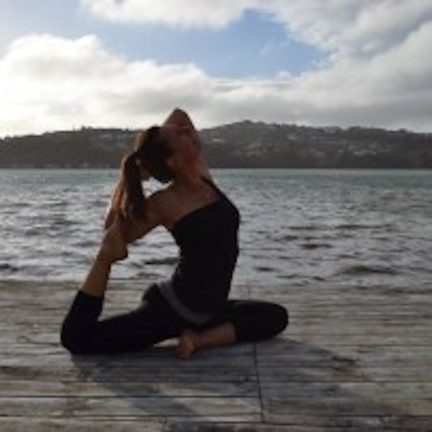Body of a Warrior, Heart of a Monk

The Origins of Warrior I Pose
We all know Warrior I pose as being the bread and butter of many vinyasa styles and we probably have a fair idea of how to place our body in it, but what are its origins? Knowing the history of the pose will help you embody it more when you practice.
Warrior I Virabhadrasa I pose comes from the Sanskrit work vira. Virameans strong or warrior-like. Another word for strength in Sanskrit is sthira which means strength, stability or steadiness. These qualities will help you feel the power of the pose as you build it from the ground up.
Warrior I was named after Virabhadra the warrior. He was created out of a lock of Shiva’shair in revenge for the death of his loved one Shakti. The story goes like this: The father in law of Shakti, Daksha was so incensed about his daughters marriage to Shiva, he threw a party and didn’t ask Shiva to attend. Shakti was so outraged she threw herself into the fire. Shiva then cut off one of his dreadlocks and threw that onto the fire creating Virabhadra who then promptly stormed the party and cut Daksha’s head off.
Strong men know not despair Arjuna, for this wins them neither heaven nor earth.”
~The Bhagavad Gita
The metaphorical implication is that the pose is about confrontation. In the pose we are called to confront our own bodily, emotional or mental weaknesses. The pose will show you your limitations and you should feel the triumph of your spirit rising against your own limitations.
Our deepest fear is not that we are inadequate. Our deepest fear is that we are powerful beyond measure. It is our light, not our darkness, that most frightens us. We ask ourselves, ‘Who am I to be brilliant, gorgeous, talented and fabulous?’ Actually, who are you not to be? You are a child of God; your playing small doesn’t serve the world. There’s nothing enlightened about shrinking to that other people don’t feel insecure around you.”
~Marianne Williamson
The pose calls upon us to exhibit courage and strength. With our arms rising up like swords but our chest open as a symbol of courage as you gaze across your battlefield. Being strong yet open-hearted in the pose will create a balance of will yet surrender, you can feel the strong energy but also embrace the pose without aggression.
Be gentle, yet fearless, next time you are in Warrior I and feel the strength of your body but the heart of a monk.
A Guide for Opening & Connecting
Learn the art of mindfulness and loving kindness — the foundations for living with an open heart — in The Yogi’s Heart, a guide for opening and connecting. For it is only when you approach life from a place of openness can you embody connectedness with all things.
Vasisthasana: Side Plank Pose

ADJUSTMENTS | BENEFITS | SEQUENCING | SANSKRIT | STEPS
Vasisthasana (vah-sish-TAHS-anna) comes in many variations. At its core, side plank is a challenging arm balance that requires core and shoulder strength.
Philosophy + Origin
The word “vasistha” appears in the yogic tradition as the name of several sages. This pose honors all the vasistha sages, including an array of rishis and prajapatis (lords of creation). In one story of Vasistha, he was the proud owner of a famous wish-granting cow named Nandini that helped Vashistha acquire vast wealth. While the Sanskrit translation of this pose is “Sage Vasistha’s pose,” the common translation is “side plank.”





































